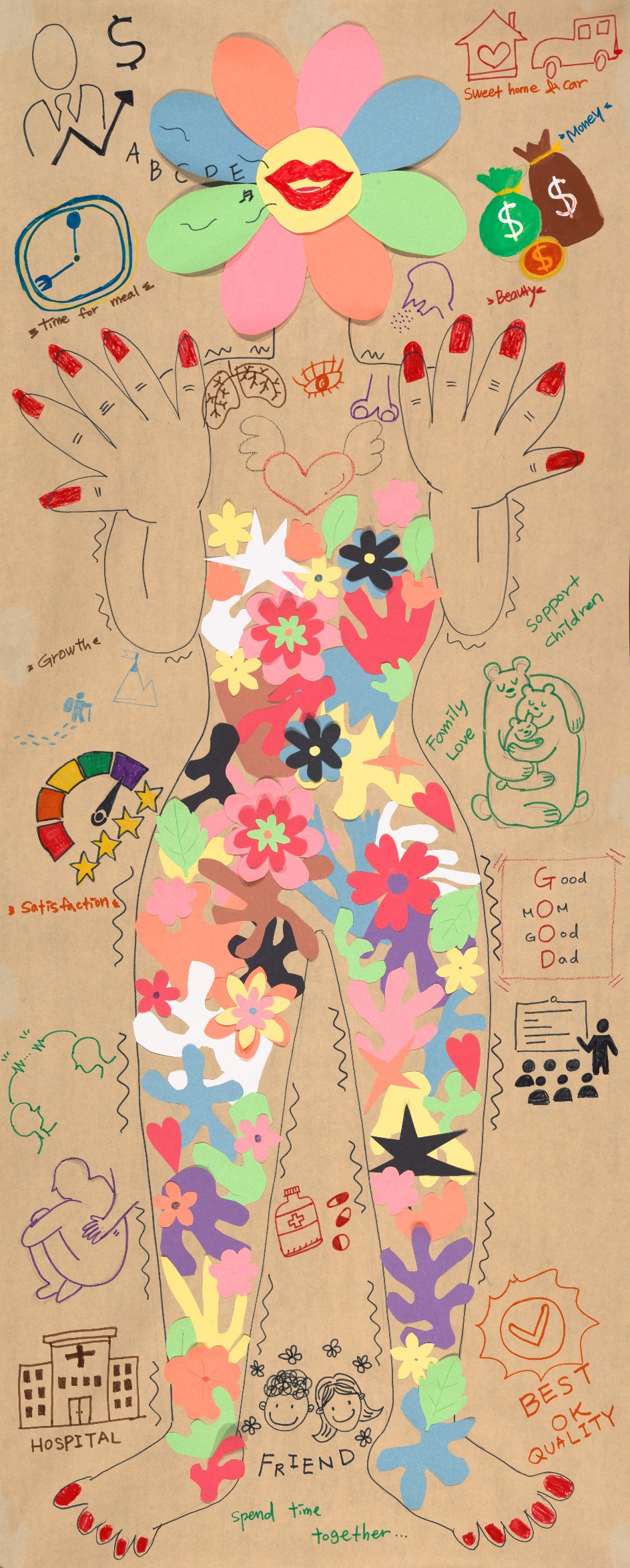A Body-Mapping Study of Nail Technicians’ Occupational Health and Lived Experiences
Published 11 June, 2025
There is a growing body of evidence on the occupational health experiences of nail technicians, which can include musculoskeletal aches and pains (linked to poor ergonomic design), adverse respiratory, dermal, and ocular health impacts (linked to chemical exposures), worries about cancer and reproductive health (linked to long-term chemical exposures), and various digestive and neurological symptoms (linked to workplace stressors). While these studies contribute to work towards safe worksites, they may inadvertently reduce nail salons to sites of hazards and harms, as well as obscure the complexities of nail technicians' relationships to their work.
In partnership with the Toronto-based Parkdale Queen West Community Health Centre's Nail Salon Workers Project, Dr. Reena Shadaan facilitated an arts-based approach to understand nail technicians' relationships to their work – beyond occupational hazards.
“In the context of occupational health, looking at hazards is important. That's how we understand what's wrong and what needs to be addressed,” shares Shadaan. “However, a focus on the hazards alone erases the complexities of nail salon-based work and nail technicians. This can mean that a partial picture is interpreted as the whole picture, but hazards alone don't exclusively define this work or these workers.”
From February 2024 to May 2024, 19 Toronto-based nail technicians visualized their experiences of work and health on life-sized body-maps. Using various visual and textual elements, the body-maps highlight multiple layers of emotion—in the nail technicians' framing of their work experiences, in their labor as beauty service workers, and in their body-map creation processes. Moreover, their narratives illustrate how their work conditions are consequential to other aspects of their life, such as their social health.
“The arts-based body-maps allow for a more comprehensive understanding of nail technicians experiences as workers, says Shadaan. “They illustrate the occupational hazards and resultant bodily harms, but also the joys, such as in creative work and in interacting with long-time clients, as well as nail technicians' hopes and dreams for the future.”
Shadaan published this work in Qualitative Research in Medicine and Healthcare.

Contact author:
Reena Shadaan
Technoscience Research Unit and Acceleration Consortium, University of Toronto
Institute for Work and Health
Funder: Social Sciences and Humanities Research Council’s Race, Gender, and Diversity Initiative (SSHRC-RGDI), the Institute for Work and Health, and the Canada First Research Excellence Fund.
Conflict of interest: The author declares no conflict of interest. The funding was in part provided by Institute for Work and Health, the author’s affiliated institution, through internal support mechanisms.
See the article: Shadaan, Reena.“It’s a mixture of emotions”: Nail technicians’ visual storytelling of work and health,
Qualitative Research in Medicine & Healthcare 9.1 (2025): 100003. https://doi.org/10.1016/j.qrmh.2025.100003